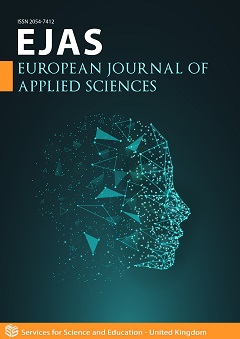Unification of Strong-Weak Interactions and Possible Unified Scheme of Four-Interactions
DOI:
https://doi.org/10.14738/aivp.85.9116Keywords:
Department of Physics, Yunnan University, Kunming 650091, ChinaAbstract
First, various known unified theories of interactions in particle physics are reviewed. Next, strong and weak interactions are all short-range, which should more be unified. Except different action ranges their main character is: strong interactions are attraction each other, and weak interactions are mutual repulsion and derive decay. We propose a possible method on their unification, whose coupling constants are negative and positive, respectively. Further, we propose a figure on the unification of the four basic interactions in three-dimensional space, and search some possible tests and predictions, for example, strong-weak interactions transform each other, some waves may be produced. Finally, based on the simplest unified gauge group GL(6,C) of four-interactions, a possible form of Lagrangian is researched. Some relations and equations of different interactions are discussed.
References
(2) A. Einstein, The Meaning of Relativity (Fifth edition). Princeton.1955.
(3) V. Hlavaty, Geometry of Einstain's Unified Field Theory. P.Noordhoff Ltd. 1957.
(4) V.D. Sabbata and E. Schmutzer, Unified Field Theories of More Than 4 Dimensions Including Exact Solutions. World Scientific. 1983.
(5) Yi-Fang Chang, New Research of Particle Physics and Relativity. Yunnan Science and Technology Press. 1989. p184-216. Phys.Abst.93,1371(1990).
(6) Yi-Fang Chang, International Review of Physics. 8(2014):132.
(7) C.N. Yang, Phys.Rev.Lett. 33(1974):445.
(8) S. Weinberg, Phys.Rev.Lett. 19(1967):1264.
(9) S. Weinberg, Phys.Rev.Lett. 27(1971):1688.
(10) I. Bars, M.B. Halpern and M. Yoshimura, Phys.Rev.Lett. 29(1972):969.
(11) I. Bars, M.B. Halpern and M. Yoshimura, Phys.Rev. D7(1973):1233.
(12) J.C. Pati and A. Salam, Phys.Rev. D8(1973):1240.
(13) C. Itoh, T. Minamikawa, K. Miura and T. Watanabe, Prog.Theor.Phys. 51(1974):1575.
(14) H. Georgi and S.L. Glashow, Phys.Rev.Lett. 32(1974):438.
(15) H. Fritzsch and P. Minkowski, Ann.Phys. 93(1975):193.
(16) F. Gursey, P. Ramond and P. Sikivie, Phys.Lett. 60B(19976):177.
(17) X. Calmet, S.D. Hsu and D. Reeb, Phys.Rev.Lett. 101(2008):171802.
(18) R. Blumenhagen, Phys.Rev.Lett. 102(2009):071601.
(19) C.J. Isham, A. Salam and J. Strathdee, Lett.Nuov.Cim. 5(1972):969.
(20) C.J. Isham, A. Salam and J. Strathdee, Phys.Rev. D8(1973):2600.
(21) C.J. Isham, A. Salam and J. Strathdee, Phys.Rev. D9(1975):1702.
(22) S.M. Barr and S. Raby, Phys.Rev.Lett. 79(1997):4748.
(23) Z. Kakushadze and S.H.H. Tye, Phys.Rev. D55(1997):7878.
(24) P. Das and P. Jain, Phys.Rev. D62(2000):075001.
(25) C.H. Albright and S.M. Barr, Phys.Rev.Lett. 85(2000):244.
(26) Yi-Fang Chang, Hadronic J. 7(1984):1118.
(27) Yi-Fang Chang, International Journal of Modern Mathematical Sciences. 10(2014):75.
(28) G. Triantaphyllou and G. Zoupanos, Phys.Lett. B489(2000):420.
(29) S. Weinberg, The Quantum Theory of Fields II. Modern Applications. Cambridge University Press. 1995.
(30) G. ‘tHooft, Nucl.Phys. B61(1973):455.
(31) S. Weinberg, Phys.Rev. D8(1973):5497.
(32) C. Nash, Relativistic Quantum Fields. Academic Press. 1978.
(33) T. van Ritbergen, J.A.M. Vermaseren and S.A. Larin, Phys.Lett. B400(1997):379.
(34) K.G. Chetyrkin, B.A. Kniehl and M. Steinhauser, Nucl.Phys. B510(1998):61.
(35) M. Czakon, Nucl.Phys. B710(2005):485.
(36) J.C. Collins and A.J. Macfarlane, Phys.Rev. D10(1974):1201.
(37) T.D. Lee, Particle Physics and Introduction to Quantum Field Theories. Amsterdam: OPA. 1981.
(38) Bing-Lin Yong, Introduction to Field Theory. Science Press. 1987.
(39) D.J. Gross and F. Wilczek, Phys.Rev.Lett. 30(1973):1343.
(40) H.D. Politzer, Phys.Rev.Lett. 30(1973):1346.
(41) K. Yagi, T. Hatsuda and Y. Miake, Quark-Gluon Plasma: From Big Bang to Little Bang. Cambridge University Press. 2005.
(42) Yi-Fang Chang, International Journal of Physics and Applications. 1(2019):30.
(43) B.T. Feld, Models of Elementary Particles. Blaisdell Publishing Company. 1969.
(44) Yi-Fang Chang, International Journal of Theoretical Physics. 2(2013):184.
(45) Yi-Fang Chang, J. Yunnan University. 30(2008):41.
(46) Yi-Fang Chang, J. Shangqiu Teachers College. 24(2008):57.
(47) Yi-Fang Chang, Internal Review of Physics. 5(2011):340.
(48) Yi-Fang Chang, International Journal of Theoretical Physics. 2(2013):100.
(49) Yi-Fang Chang, International Journal of Modern Applied Physics. 4(2013):69.
(50) Yi-Fang Chang, International Journal of Advanced Research in Physical Science. 1(2014):11.
(51) Yi-Fang Chang, International Journal of Modern Theoretical Physics. 5(2016): 22.
(52) Yi-Fang Chang, International Journal of Modern Applied Physics. 9(2019):1.
(53) Yi-Fang Chang, Hadronic J. 40(2017):291.
(54) J.F. Owens, et al., Phys.Rev. D18(1978):1501.
(55) H. Baer and R.N. Cahn, J.Phys.G. 37(2010)7A:376.
(56) Yi-Fang Chang, International Journal of Theoretical Physics. 7(2018):16.
(57) Yi-Fang Chang, International Journal of Theoretical Physics. 2(2013):53.
(58) P.K.F. Grieder, Extensive Air Showers. Heidelberg, Springer-Verlag. 2010.
(59) T.K. Gaisser, Cosmic Rays and Particle Physics. Cambridge University Press. 1990.
(60) T. Stanev, High Energy Cosmic Rays (second edition). Springer-Praxis. 2010.
(61) Yi-Fang Chang, A preliminary scheme on a unification of four interactions. 1974.
(62) H. Terazawa, Prog.Theor.Phys. 58(1977):1276.
(63) A. Ashtekar, Phys.Rev.Lett. 57(1986):2244.
(64) A. Ashtekar, Phys.Rev. D36(1987):1587.
(65) T. Jacobsoni and L. Smolin, Nucl.Phys. B299(1988):295.
(66) Yi-Fang Chang, J.Xinyang Normal University. 17(2004)1:30.






